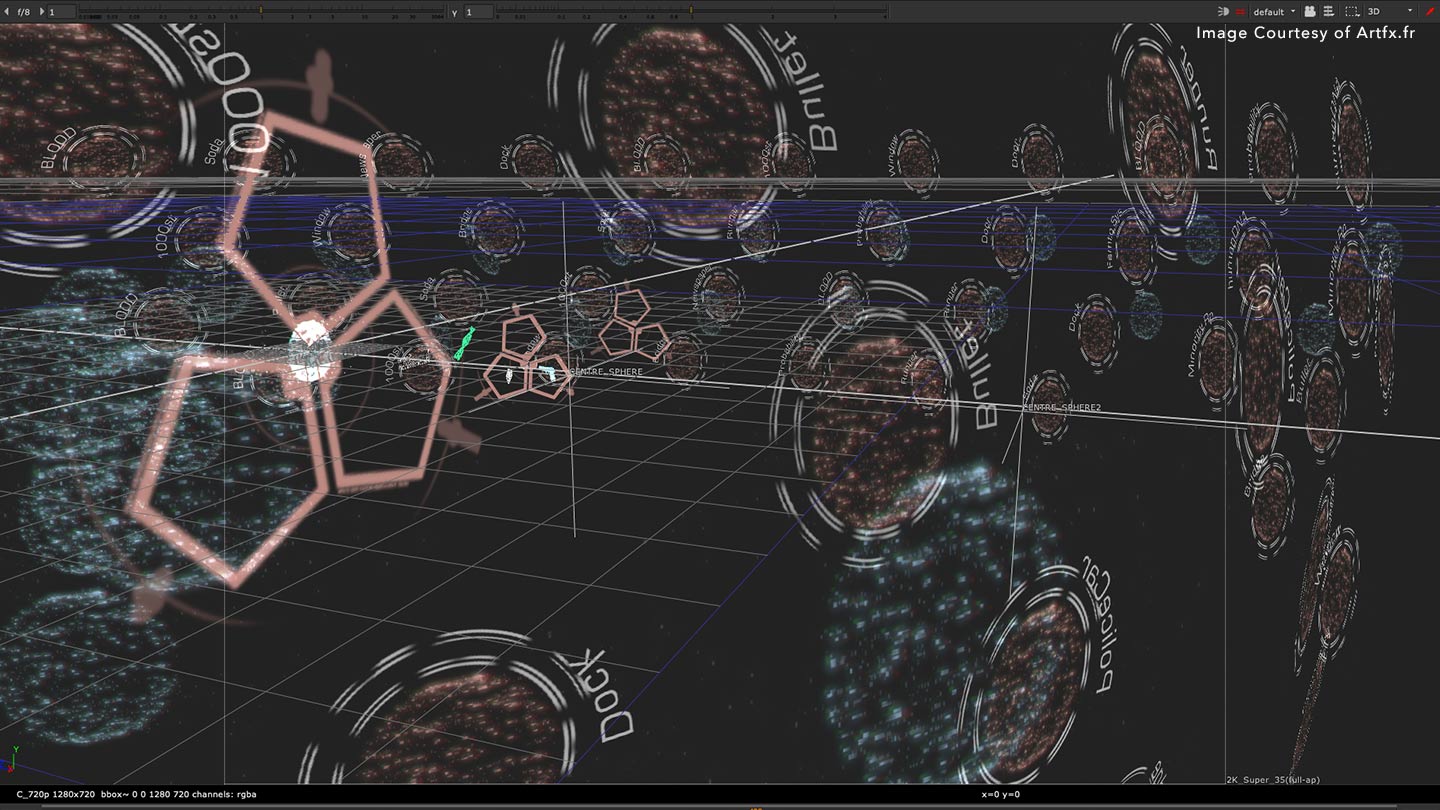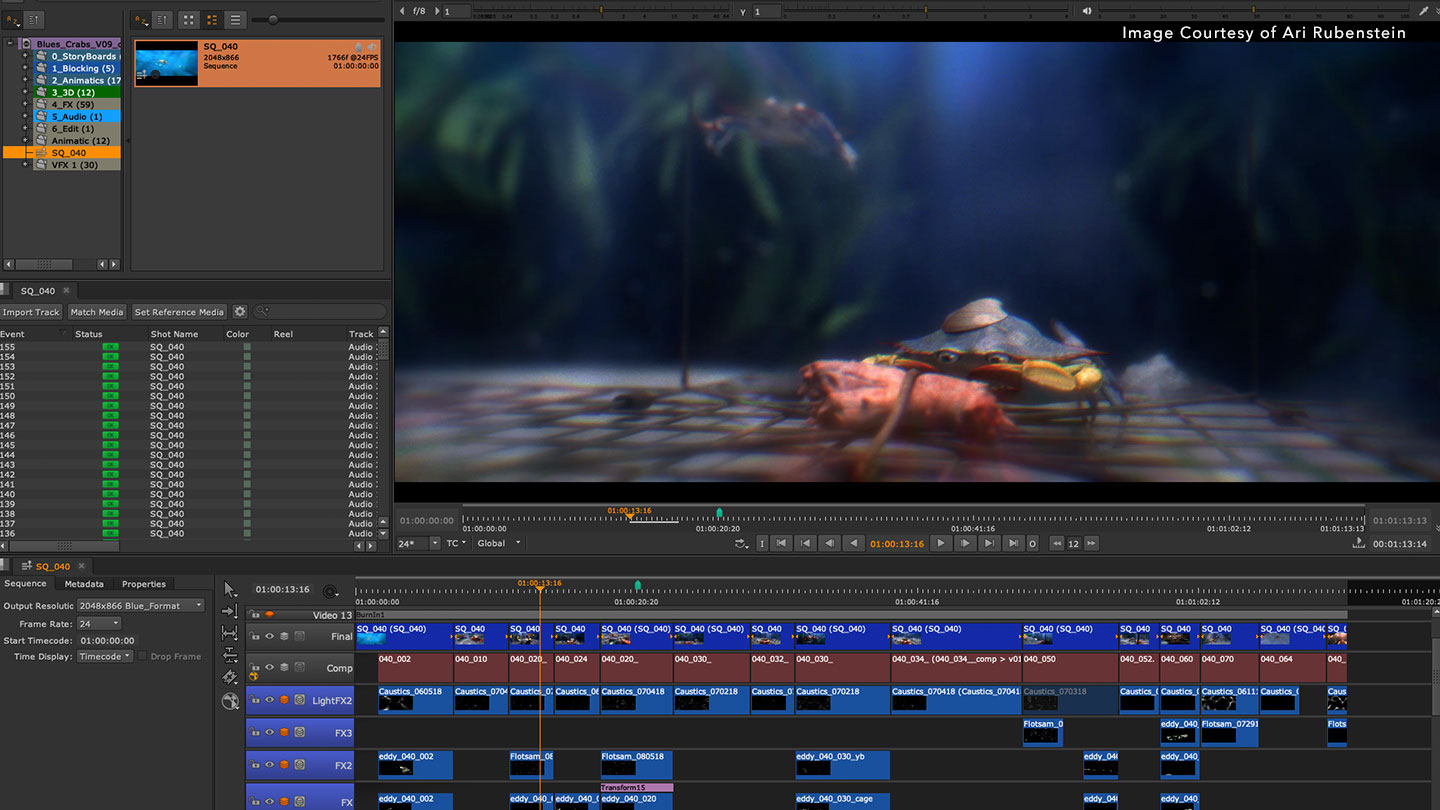Getting to know the Particle System in Nuke
Using the Particle System in Nuke to speed up artist workflows
The Particle System in NukeX and Nuke Studio is a valuable tool to have in your compositing armoury. Need to knock up a blood spurt from a gunshot wound, or a splash of raindrops on a pond? You can quickly create 3D elements that add a realistic finishing touch without leaving Nuke.
Using the Particle System in Nuke gives you additional creative control over the finishing touches of your shots. The built-in system gives you the power to create your own particle simulations while compositing. That means you can make sure the particles provide the most realistic finish possible, while avoiding the added delay of requesting new particle renders from the FX team for non-hero effects.
With decisions increasingly being pushed into comp, using Nuke’s Particle System enables you to wait until you know what’s required before you invest time into specific elements of a shot: great when there's no time to go back to the FX department and get a new particle render for a non-hero effect.

What is the Nuke Particle System?
Particle systems are environments which spawn and then track specific points, or particles.
A particle is a dot or a point that exists in the 3D coordinate system with certain attributes attached to it. These typically they include: how long the particle has been alive, what size it is, plus its position and trajectory.
You can also include attributes specific to the type of particle simulation you’re running, like temperature (for an explosion), or viscosity (for a water splash).
The Particle System tracks all of this information and channel data over a set time period, providing full customization over every element of the way the particle appears in the shot.
You can also do things like attach a piece of geometry to your particle, or a sprite, which is a 2D image that always faces the camera.
For example, you might want to create an explosion: it starts off with a point in space and you spawn a bunch of particles which burst very rapidly outwards.
You attach lifespan information, color information, temperature, and then for each particle in that system, you pull that data and derive what the particle will look like. So you have all of the information you need to fine-tune the finishing touches of your comp.
How does Nuke’s Particle System help compositors?
The Particle System in Nuke is great for compositors because it means you can easily set up particle systems that match the plate you're working with — whether that’s in the placement and alignment of particles, or in the interactions with card projection setups and geometry in Nuke’s 3D environment.
Similarly, if you’ve added additional information — like light information with Nuke’s Relight node — you can use these additional comp elements to influence the Particle System.
As well as harnessing the power of nodes to influence the look or behavior of a particle, all Nuke tools are available for setting up the Particle System. You can use these tools to set up textures and pull data from the shot you’re working on to feed into the system.
This is really powerful, as it means you can drive the Particle System using image information from your comp — giving potentially better integrated results and, when working in Nuke, a faster turnaround.
Using the ScanlineRender node helps speed up additional data passes — like normals, motion vectors, surface data and point data — without switching applications. Plus, with the Nuke Python API you can customize the Particle System to suit your workflow.

What effects can the Particle System create?
Using the Particle System in NukeX and Nuke Studio means that when compositing, you can add an extra bit of detail to your comp, without waiting for a 3D artist to create the effect for you.
As well as adding a layer of realistic weather effects such as rain and snow to shots, there are a number of other useful applications of the Particle System.
One common use case is impact hits for laser blasts or gunfire. Creating the sparks that burst out from the specific point of impact. Similarly it can be used to create embers from a fire, visible breath on cold days, debris from explosions, and more.
The system can also be used in conjunction with Nuke’s unique deep compositing capabilities to create powerful workflows.
You can output deep compositing data for particles generated inside of Nuke, for accurate holdouts without the need for re-rendering when other assets change.
Create sheets of rain or a fog volume, and when you render using Nuke’s ScanlineRender node, you’ll have deep data for your particle effects.
You can then easily integrate and composite your particles with other deep data elements without having to render for holdouts, even if animation or models change later on. This creates a dynamic and efficient workflow when working with assets that are likely to change. This is perfect in productions where updates are being made right up to the deadline as not having to simulate new particles with each change can drastically save you time.
Add the finishing touch to your shot
More and more work is being pushed to later stages in production and into the compositing space. That's why it’s more important than ever for compositors to know how they can make best use of all the workflows available to them in Nuke, and find solutions without having to go back in the pipeline.
Having a true particle simulation in Nuke means you have all of the tools and information you need to create effects that add the final touch of realism to a sequence. Whether it’s a boat caught in a storm, an explosion in an action scene, or a dusty desert path.

